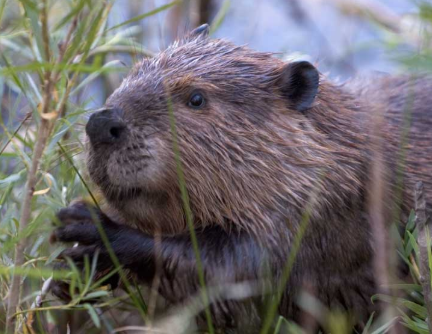BEAVERS AND NATIVE WILDLIFE
Did you know that many of Oregon’s most endangered wildlife species flourish in the habitat provided by beaver ponds?
Beavers are ecosystem engineers! The presence of beavers, and their activity in stream ecosystems, lead to improved habitat for fish, wildlife, and native plants, as well as increased drought, flood, and fire tolerance. Many of Oregon’s streams, creeks, and rivers with beaver activity are also wildlife hotspots, supporting important native species of fish, songbirds, raptors, deer, and more.
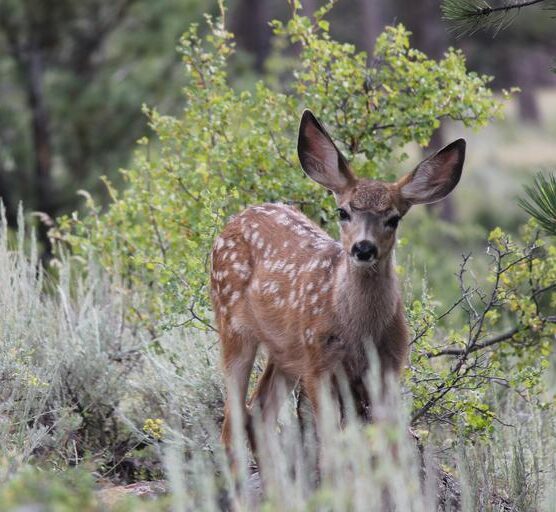
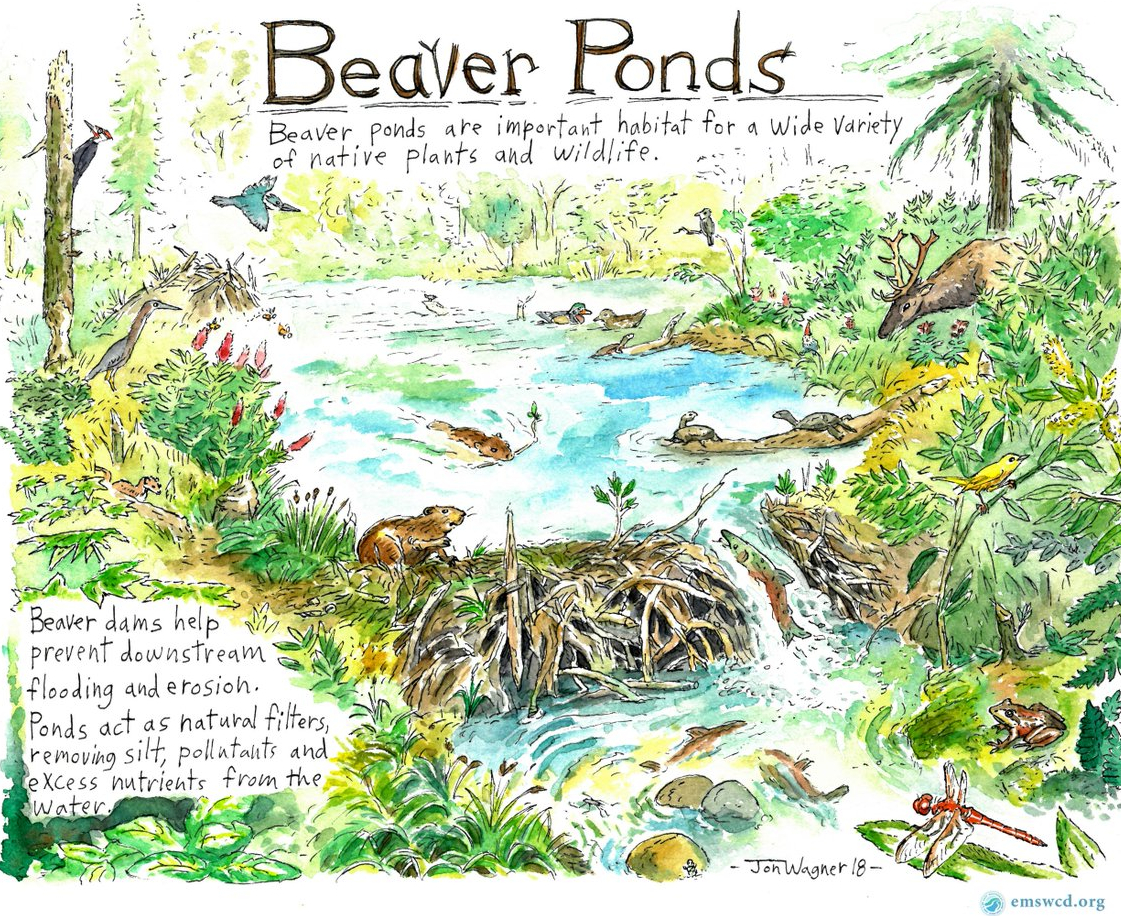
How Beaver Habitat Benefits Wildlife
Beaver dams naturally regulate water flow, creating ponds, raising the water table, and creating a nutrient-rich environment. Beavers pond water through dams to create depth by which to escape predators. They also create side channels by which to transport food more safely and easily.
These beaver-engineered modifications also slow faster waters, providing more time and lateral space for vegetation to grow and establish – expanding food and habitat for wildlife. Streams with an active beaver colony will often be more resilient to change. Even in serious droughts, beaver engineering can keep water on the landscape even when the surrounding land is parched. Beavers are considered a keystone species – creators of conditions that support entire ecological communities, and can increase the resilience of the aquatic species of plants, amphibians, invertebrates and fish.
And on land, terrestrial wildlife benefits from the increase in habitat, water, plant forage, and prey. Regions of wetlands throughout the high desert act as thriving oases, attracting native birds, ungulates, bats, and large predators.
Oregon Wildlife Conservation Strategey
 The Oregon Conservation Strategy is an overarching state strategy for conserving fish and wildlife, especially in light of climate change. It provides a shared set of priorities for addressing Oregon’s conservation needs.
The Oregon Conservation Strategy is an overarching state strategy for conserving fish and wildlife, especially in light of climate change. It provides a shared set of priorities for addressing Oregon’s conservation needs.
The goals of the Conservation Strategy are to maintain healthy fish and wildlife populations by maintaining and restoring functioning habitats, preventing declines of at-risk species, and reversing declines in these resources where possible.
Learn more about some of our high desert Oregon Conservation Strategy Species
A great number of Oregon’s native plant and wildlife species benefit from the presence and activity of beavers as well, many of whom are identified strategy species from the Oregon Conservation Strategy. The ponds formed by beaver damming provide more stable habitat for fish like Westslope Cutthroat Trout, amphibians such as Columbia Spotted Frogs, Inland Tailed Frogs, and Western Toads, reptiles such as Western Painted Turtles, and mammals such as river otters, mink, and muskrats, all of whom depend on year-round water availability to survive.
Beaver ponds also collect debris like twigs, sediments, and leaf litter, which form habitat for aquatic invertebrates such as Columbia Clubtail larvae and other insects and larvae, Western Ridged Mussels and other mollusks, worms, and crustaceans. Aquatic invertebrates are a crucial food source for fish, amphibians, and waterfowl like the Trumpeter Swan. Additionally, flying insects supported by beaver ponds provide food for Townsend’s Big-eared Bats and Fringed Myotis, Lewis’ Woodpecker, Olive-sided Flycatchers, and other songbirds.
The moisture retained by beaver dams supports plant diversity – rare plants like the Arrowleaf Thelypody and Oregon Semaphore Grass that depend on riparian habitats grow well in sites with beaver activity. Native plants such as these in turn support populations of native pollinators, herbivores, and omnivores. Grasses, rushes, cattails and other marshland plants offer shelter, nesting, and brood areas for birds. Riparian trees and shrubs supply forage and refuge for big game, songbirds, and upland game birds like Greater Sage Grouse and Columbian Sharp-tailed Grouse.
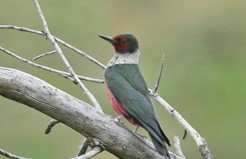
Federal Listing: Species of Concern State Listing: Sensitive

Federal Listing: Species of Concern State Listing: Sensitive
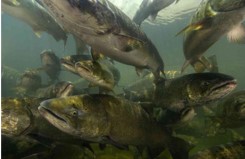
Federal Listing: Endangered State Listing: Sensitive
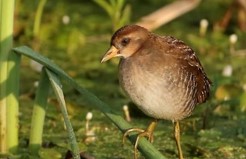
Federal Listing: Species of Concern State Listing: Sensitive
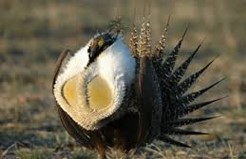
Greater Sage Grouse
Federal Listing: Species of Concern
State Listing: Sensitive

Willow Flycatcher
Federal Listing: Species of Concern
State Listing: Sensitive

Bull Trout
Federal Listing: Species of Concern
State Listing: Sensitive
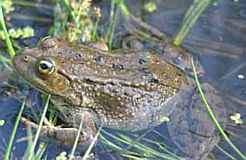
Columbia Spotted Frog
Federal Listing: Species of Concern
State Listing: Sensitive

Trumpeter Swan
State Listing: Sensitive
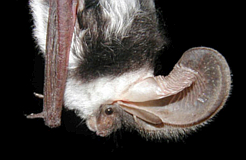
Spotted Bat
Federal Listing: Species of Concern
State Listing: Sensitive

Westslope Cutthroat Trout
Federal Listing: Species of Concern
State Listing: Sensitive

Warner Sucker
Federal Listing: Threatened
State Listing: Threatened
More reading on wildlife and beavers:
For more resources about beavers and wildlife, check out the Beaver Institute’s resource library!
